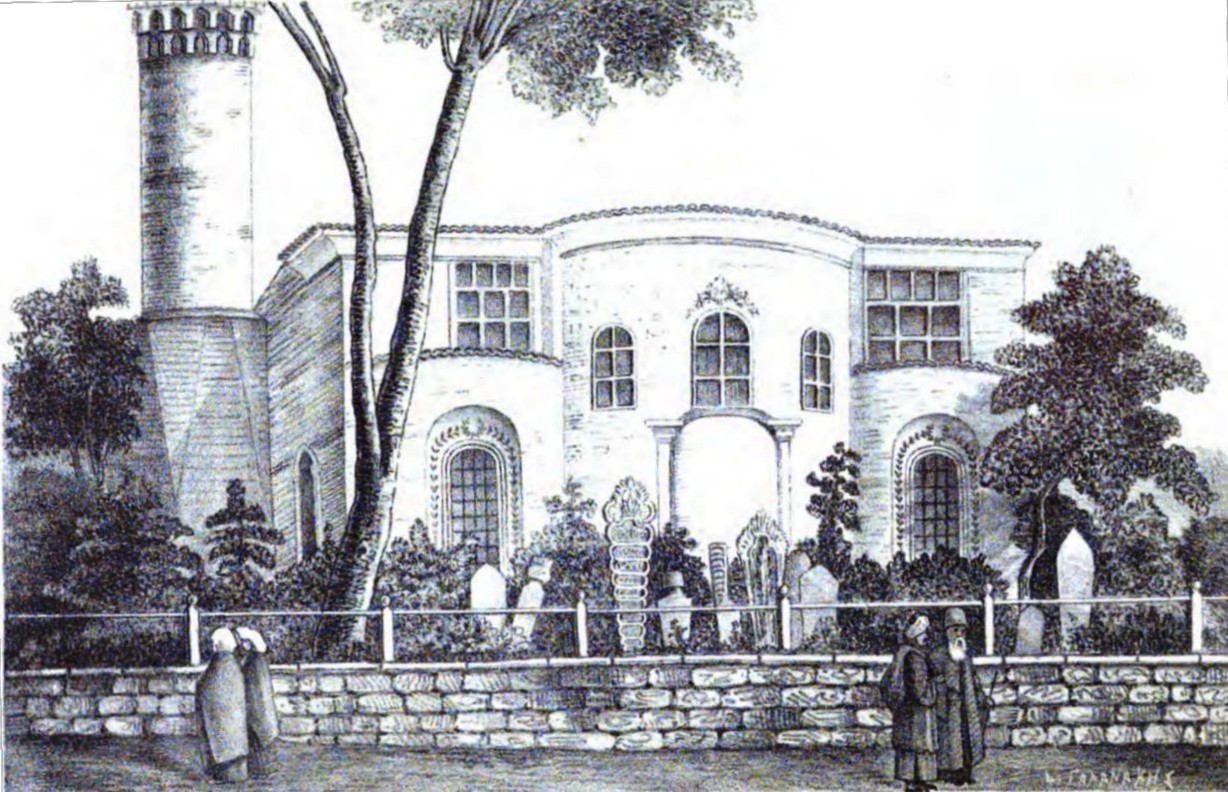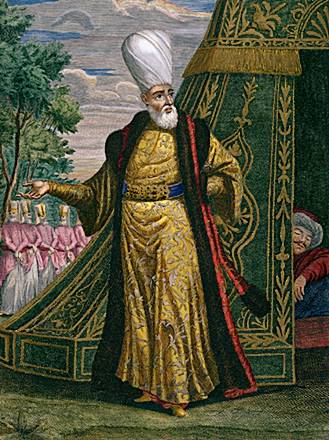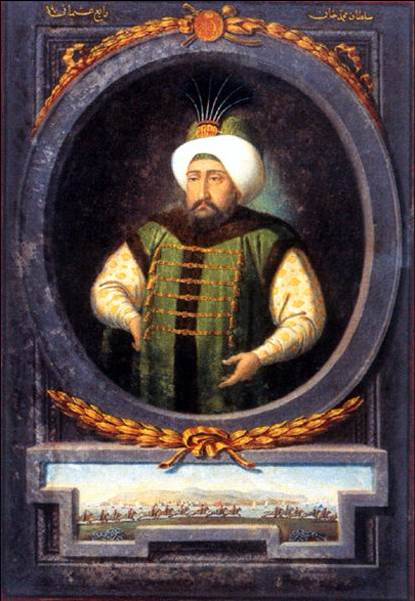|
Sekban
The sekban were mercenaries of peasant background in the Ottoman Empire. The term ''sekban'' initially referred to irregular military units, particularly those without guns, but ultimately it came to refer to any army outside the regular military. The sekbans were not only loyal to the Ottoman state, but they could become loyal to anyone who paid them a sufficient salary. These troops were maintained by raising a tax called the ''sekban aqçesi''. They were recruited in such numbers that they became the most numerous component of the imperial armies. The use of these troops ultimately led to grave consequences: the end of hostilities, as in the war against Persia in 1590 and the war against Austria in 1606, saw a large number of sekban without employment or means of livelihood. As a result, many of these soldiers took to brigandage and revolt, and they plundered much of Anatolia between 1596 and 1610. Rivalries between the janissaries and the sekban ultimately resulted in a reb ... [...More Info...] [...Related Items...] OR: [Wikipedia] [Google] [Baidu] |
Sekbanbaşı Mosque
Sekbanbaşı Mosque was a mosque located in the Ottoman capital of Constantinople (modern-day Istanbul). It was originally a Byzantine church. According to the writings of Hafiz Hüseyin al-Ayvansarayî (''Hadîkatü’l-cevâmi‘''), the original Byzantine church had been converted by İbrahim Ağa (died 1496–7), the lieutenant of the Ottoman sekban regiments (''sekbanbaşı''). The building was located in Kendir Sokağı, in the Kırkçeşme quarter ( Fatih district), near the ancient aqueduct of Roman Emperor Valens. In 1838, the mosque was damaged by a fire, but underwent some restorations. In 1918, during the final few years of the Ottoman Empire, the mosque and the surrounding neighborhood were once again hit by a fire. This time, the mosque did not undergo reparations and was gradually abandoned. The heavily damaged fundament of the mosque was then completely torn down in 1943 as the Turkish government wanted to enlarge the Atatürk Boulevard. In 1954, the soil on wh ... [...More Info...] [...Related Items...] OR: [Wikipedia] [Google] [Baidu] |
Janissaries
A janissary (, , ) was a member of the elite infantry units that formed the Ottoman sultan's household troops. They were the first modern standing army, and perhaps the first infantry force in the world to be equipped with firearms, adopted during the reign of Murad II (r. 1421–1444, 1446–1451). The corps was established under either Orhan or Murad I, and dismantled by Mahmud II in 1826. Janissaries began as elite corps made up through the '' devşirme'' system of child levy enslavement, by which indigenous European Christian boys, chiefly from the Balkans, were taken, levied, subjected to forced circumcision and forced conversion to Islam, and incorporated into the Ottoman army. They became famed for internal cohesion cemented by strict discipline and order. Unlike typical slaves, they were paid regular salaries. Forbidden to marry before the age of 40 or engage in trade, their complete loyalty to the Ottoman sultan was expected. By the 17th century, due to a drama ... [...More Info...] [...Related Items...] OR: [Wikipedia] [Google] [Baidu] |
Ottoman Empire
The Ottoman Empire (), also called the Turkish Empire, was an empire, imperial realm that controlled much of Southeast Europe, West Asia, and North Africa from the 14th to early 20th centuries; it also controlled parts of southeastern Central Europe, between the early 16th and early 18th centuries. The empire emerged from a Anatolian beyliks, ''beylik'', or principality, founded in northwestern Anatolia in by the Turkoman (ethnonym), Turkoman tribal leader Osman I. His successors Ottoman wars in Europe, conquered much of Anatolia and expanded into the Balkans by the mid-14th century, transforming their petty kingdom into a transcontinental empire. The Ottomans ended the Byzantine Empire with the Fall of Constantinople, conquest of Constantinople in 1453 by Mehmed II. With its capital at History of Istanbul#Ottoman Empire, Constantinople (modern-day Istanbul) and control over a significant portion of the Mediterranean Basin, the Ottoman Empire was at the centre of interacti ... [...More Info...] [...Related Items...] OR: [Wikipedia] [Google] [Baidu] |
Military Units And Formations Of The Ottoman Empire
A military, also known collectively as armed forces, is a heavily Weapon, armed, highly organized force primarily intended for warfare. Militaries are typically authorized and maintained by a sovereign state, with their members identifiable by a distinct military uniform. They may consist of one or more military branches such as an army, navy, air force, space force, marines, or coast guard. The main task of a military is usually defined as defence of their state and its interests against external armed threats. In broad usage, the terms "armed forces" and "military" are often synonymous, although in technical usage a distinction is sometimes made in which a country's armed forces may include other paramilitary forces such as armed police. Beyond warfare, the military may be employed in additional sanctioned and non-sanctioned functions within the state, including internal security threats, crowd control, promotion of political agendas, emergency services and reconstructi ... [...More Info...] [...Related Items...] OR: [Wikipedia] [Google] [Baidu] |
Grand Vizier
Grand vizier (; ; ) was the title of the effective head of government of many sovereign states in the Islamic world. It was first held by officials in the later Abbasid Caliphate. It was then held in the Ottoman Empire, the Mughal Empire, the Sokoto Caliphate, the Safavid dynasty, Safavid Empire and Morocco, Cherifian Empire of Morocco. In the Ottoman Empire, the grand vizier held the imperial seal and could convene all other viziers to attend to affairs of the state; the viziers in conference were called "''Kubbealtı'' viziers" in reference to their meeting place, the ''Kubbealtı'' ('under the dome') in Topkapı Palace. His offices were located at the Sublime Porte. Today, the Prime Minister of Pakistan is referred to in Urdu as ''Wazir-e-azam'', which translates literally to grand vizier. Initially, the grand viziers were exclusively of Turk origin in the Ottoman Empire. However, after there were troubles between the Turkish grand vizier Çandarlı Halil Pasha the Younger and S ... [...More Info...] [...Related Items...] OR: [Wikipedia] [Google] [Baidu] |
Pasha
Pasha (; ; ) was a high rank in the Ottoman Empire, Ottoman political and military system, typically granted to governors, generals, dignitary, dignitaries, and others. ''Pasha'' was also one of the highest titles in the 20th-century Kingdom of Egypt and it was also used in Morocco in the 20th century, where it denoted a regional official or governor of a district. Etymology The English word ''pasha'' comes from Turkish language, Turkish ('; also ()). The Oxford English Dictionary attributes the origin of the English borrowing to the mid-17th century. The etymology of the Turkish word itself has been a matter of debate. Contrary to titles like emir (''amīr'') and bey (sir), which were established in usage much earlier, the title ''pasha'' came into Ottoman Empire, Ottoman usage right after the reign of Osman I (d. 1324), though it had been used before the Ottomans by some Anatolian beyliks, Anatolian Turkish rulers of the same era. Old Turkish had no fixed distinction betwe ... [...More Info...] [...Related Items...] OR: [Wikipedia] [Google] [Baidu] |
Rumelia Eyalet
The Eyalet of Rumeli, or Eyalet of Rumelia (), known as the Beylerbeylik of Rumeli until 1591, was a first-level province ('' beylerbeylik'' or ''eyalet'') of the Ottoman Empire encompassing most of the Balkans ("Rumelia"). For most of its history, it was the largest and most important province of the Empire, containing key cities such as Edirne, Yanina (Ioannina), Sofia, Filibe (Plovdiv), Manastır/Monastir ( Bitola), Üsküp (Skopje), and the major seaport of Selânik/Salonica (Thessaloniki). It was also among the oldest Ottoman eyalets, lasting more than 500 years with several territorial restructurings over the long course of its existence. The capital was in Adrianople (Edirne), Sofia, and finally Monastir ( Bitola). Its reported area in an 1862 almanac was . History Initially termed ''beylerbeylik'' or generically ''vilayet'' ("province") of Rumeli, only after 1591 was the term ''eyalet'' used. The first ''beylerbey'' of Rumelia was Lala Shahin Pasha, who was awarded the ... [...More Info...] [...Related Items...] OR: [Wikipedia] [Google] [Baidu] |
Suleyman II
Suleiman II ( ''Süleymān-i sānī''; ; 15 April 1642 – 22 June 1691) was the sultan of the Ottoman Empire from 1687 to 1691. After being brought to the throne by an armed mutiny, Suleiman and his grand vizier Fazıl Mustafa Pasha were successfully able to turn the tide of the War of the Holy League, reconquering Belgrade in 1690, as well as carrying out significant fiscal and military reforms. Early life Suleiman II was born on 15 April 1642 at Topkapı Palace in Constantinople, the son of Sultan Ibrahim and Saliha Dilaşub Sultan, a Serb woman originally named Katarina. Suleiman was only 3 months younger than his half-brother Mehmed IV, who was born on 2 January 1642. After the deposition and execution of his father in 1648, Suleiman's half-brother Mehmed came to the throne. On 21 October 1649, Suleiman along with his brothers Mehmed and Ahmed were circumcised. In 1651, Suleiman was confined in the ''Kafes'', a luxurious prison for royal princes within Topkapı Palace. T ... [...More Info...] [...Related Items...] OR: [Wikipedia] [Google] [Baidu] |
Mehmed IV
Mehmed IV (; ; 2 January 1642 – 6 January 1693), nicknamed as Mehmed the Hunter (), was the sultan of the Ottoman Empire from 1648 to 1687. He came to the throne at the age of six after his father was overthrown in a coup. Mehmed went on to become the second-longest-reigning sultan in Ottoman history after Suleiman the Magnificent. While the initial and final years of his reign were characterized by military defeat and political instability, during his middle years he oversaw the revival of the empire's fortunes associated with the Köprülü era. Mehmed IV was known by contemporaries as a particularly pious ruler, and was referred to as gazi, or "holy warrior" for his role in the many conquests carried out during his long reign. Under Mehmed IV's reign, the empire reached the height of its territorial expansion in Europe. From a young age he developed a keen interest in hunting, for which he is known as ''avcı'' (translated as "the Hunter"). In 1687, Mehmed was overthrown by ... [...More Info...] [...Related Items...] OR: [Wikipedia] [Google] [Baidu] |
Mercenaries
A mercenary is a private individual who joins an War, armed conflict for personal profit, is otherwise an outsider to the conflict, and is not a member of any other official military. Mercenaries fight for money or other forms of payment rather than for political interests. Beginning in the 20th century, mercenaries have increasingly come to be seen as less entitled to protection by rules of war than non-mercenaries. The Geneva Conventions declare that mercenaries are not recognized as legitimate combatants and do not have to be granted the same legal protections as captured service personnel of the armed forces. In practice, whether or not a person is a mercenary may be a matter of degree, as financial and political interests may overlap. International and national laws of war Protocol I, Protocol Additional GC 1977 (APGC77) is a 1977 amendment Protocol (diplomacy), protocol to the Geneva Conventions. Article 47 of the protocol provides the most widely accepted internati ... [...More Info...] [...Related Items...] OR: [Wikipedia] [Google] [Baidu] |
Anatolia
Anatolia (), also known as Asia Minor, is a peninsula in West Asia that makes up the majority of the land area of Turkey. It is the westernmost protrusion of Asia and is geographically bounded by the Mediterranean Sea to the south, the Aegean Sea to the west, the Turkish Straits to the northwest, and the Black Sea to the north. The eastern and southeastern limits have been expanded either to the entirety of Asiatic Turkey or to an imprecise line from the Black Sea to the Gulf of Alexandretta. Topographically, the Sea of Marmara connects the Black Sea with the Aegean Sea through the Bosporus and the Dardanelles, and separates Anatolia from Thrace in Southeast Europe. During the Neolithic, Anatolia was an early centre for the development of farming after it originated in the adjacent Fertile Crescent. Beginning around 9,000 years ago, there was a major migration of Anatolian Neolithic Farmers into Neolithic Europe, Europe, with their descendants coming to dominate the continent a ... [...More Info...] [...Related Items...] OR: [Wikipedia] [Google] [Baidu] |






